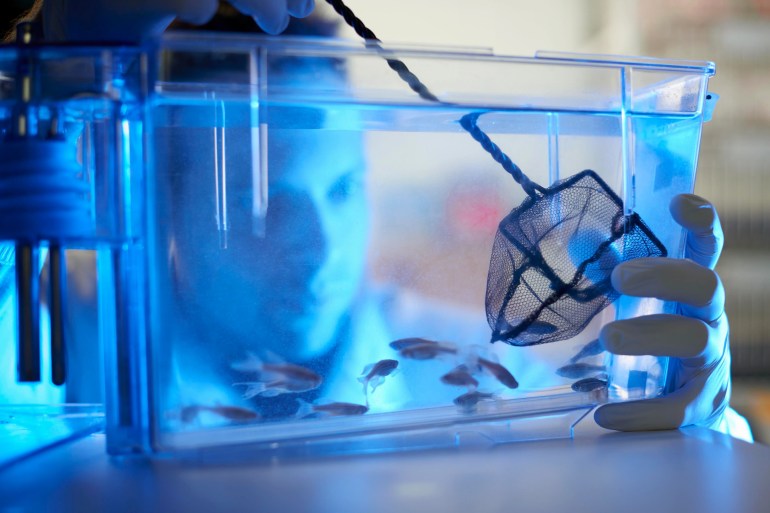When a person suffers a heart attack and does not receive treatment quickly enough, his heart muscle cells are damaged due to lack of oxygen, and then heart scars are formed (his cells are damaged), and his cells begin to die.
Because the heart cannot produce new cells, the ability to pump blood as well as it should decreases, affecting the function and efficiency of the heart.
re heart
Today, there are many promising efforts in the field of regenerative medicine that look to replace or repair damaged hearts.
Earlier this year, surgeons transplanted a pig's heart into a human patient for the first time, hoping to keep him alive, but unfortunately he died two months later.
However, some lower vertebrates, such as the zebrafish also known as zebrafish, can regenerate organs, including the heart.
Therefore, a good study of this fish and an understanding of the mechanisms of cardiac regeneration in it may help to develop cell-based therapies, or drugs that mimic the molecules found in these fish.
Previous studies have shown that these tiny, transparent fish can regenerate retinal tissue.
Now, a new research study published in Nature Genetics on July 21 shows that zebrafish can regenerate heart tissue after being injured.
Zebrafish are able to re-grow heart cells by up to 20% (Getty Images)
Repair damaged hearts
In a press release published by the Max Delbrück Center for Molecular Medicine in Germany, evolutionary biologist and study author Jan-Philipp Juncker said, "We wanted to know how this small fish could do this."
The study indicated that zebrafish are able to re-grow damaged heart cells to about 20% of the size of their heart, which is one millimeter, within only two months of exposure.
The study showed that connective tissue cells called fibroblasts are the conductors of heart regeneration in zebrafish by producing proteins that act as repair signals.
Impressively, these findings support efforts to replace or repair damaged hearts.
In May of this year, researchers were able to identify the human cells that help the human heart repair itself after a heart attack.
And in June, the blind managed to treat a heart attack in mice using messenger RNA (mRNA) technology that delivers genetic information to heart muscle cells so they can repair themselves.
Scientists have discovered 3 types of fibroblasts that are active in the hearts of zebrafish (Pixabi)
Learn the mechanism of regeneration
The researchers stunned the hearts of zebrafish with a very cold needle to simulate what happens in a human heart attack, also known as a myocardial infarction.
"It is surprising to see that in fish the immediate response to this injury was similar to that in humans," Juncker says. "But while the process stops at some point in humans, it continues in fish, as zebrafish form new cardiac muscle cells that are able to contract."
The researchers then screened nearly 200,000 isolated heart cells from zebrafish before and after injury to reveal their genetic sequences, so they could detect genetic clues that were active in the damaged heart cells.
Scientists discovered the presence of 3 types of fibroblasts, which temporarily activate the genes responsible for the production of muscle-building proteins, such as type 12 collagen proteins, which promote the growth of connective tissues.
And when the researchers turned off these genes in zebrafish, their heart cells could no longer regenerate.
Juncker states that those fibroblasts that produce this type of collagen "form up in the right area of injury."
Cardiac regeneration in zebrafish is a very complex process that is influenced by many other factors (Pixabe)
new tracks
Despite the main role of fibroblasts, some previous studies in zebrafish have also indicated that macrophages (a type of immune cell) provide the rapid response needed for cardiac regeneration.
Another study indicated that the epicardium - the outermost layer of the heart - is the main hub for cardiac regeneration, which was also supported by the current study.
The researchers genetically engineered the cells and then traced the activated fibroblasts, finding that they formed in the epicardial region, and that type 12 collagen was produced only in those regions.
Bastian Spangard, one of the study's authors, notes that cardiac regeneration in zebrafish is a very complex process, influenced by many other factors.
The experiments produced a huge amount of data, so choosing the right biological signals from such a large amount of data was very daunting.”
Further studies will be needed to confirm that these results are consistent in other animal models, such as mice and humans.

